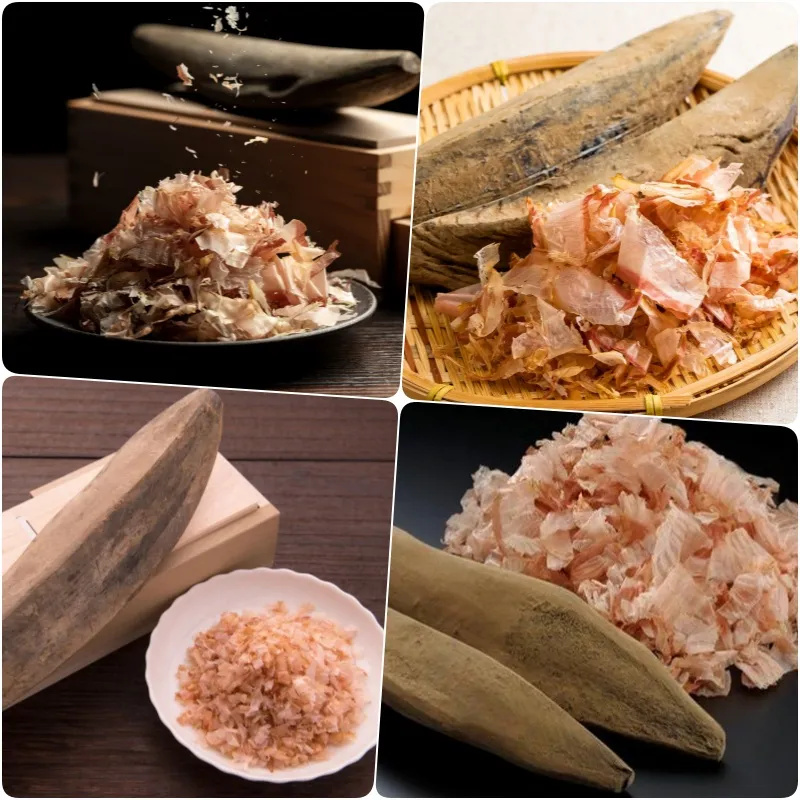
Katsuobushi – The Unique Dried Tuna Delight in Japanese Cuisine
Katsuobushi and Its Umami Flavor
Katsuobushi, made from skipjack tuna, is renowned for its rich umami flavor. This flavor is attributed to inosinate, a compound that enhances the savory taste. When combined with the glutamate from kombu (kelp), the two compounds create a powerful umami experience, offering a distinctive culinary delight.

Umami, often considered the fifth taste alongside the four basic tastes (sweet, sour, salty, and bitter), is described as a savory, meaty sweetness, reminiscent of the natural flavor of meats, vegetables, and seafood. It harmonizes with other tastes, providing a balanced and rich flavor profile to dishes.
The Katsuobushi Production Process
The preparation of Katsuobushi begins with filleting and simmering skipjack tuna. The fish is then smoked multiple times to develop its distinctive flavor. After smoking, the fish is shaved into fine pieces to ensure a perfect texture and is subsequently fermented using a koji mold, known for its digestive and health benefits. This mold is also used in making miso and soy sauce. To achieve the desired firmness, the fish is sun-dried for several months, resulting in a wood-like texture with over 80% of its moisture removed, making Katsuobushi one of the hardest foods in the world.

Uses of Katsuobushi
In Japanese cuisine, Katsuobushi is commonly used to make kombu dashi, a traditional Japanese broth, and as a garnish for various dishes. It can enhance the flavor of noodles, eggs, rice, vegetables, and tofu. A traditional dish involves sprinkling Katsuobushi flakes over hot rice, where the flakes curl and dance as they absorb the steam.
Many Japanese chefs prefer to buy whole Katsuobushi and grate it using special tools. Although pre-shaved Katsuobushi is available in Japan, most home cooks opt for pre-grated flakes that can be added to broths or used as a topping for dishes.
Buying and Storing Katsuobushi

Katsuobushi can be easily found in Japanese or Asian grocery stores and is also available online from various retailers. It can be purchased as whole pieces or pre-shaved. For storage, keep it in an airtight container or bag in a cool, dry place. When stored properly, Katsuobushi can last from six months to a year.
Katsuobushi has become an essential element in daily Japanese cuisine, enriching and enhancing its flavors. To fully experience the essence of Japanese cooking, don’t miss the opportunity to incorporate Katsuobushi into your dishes.






